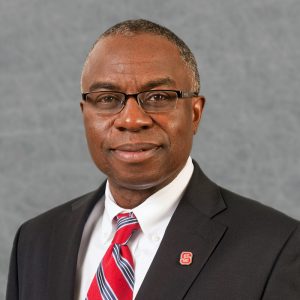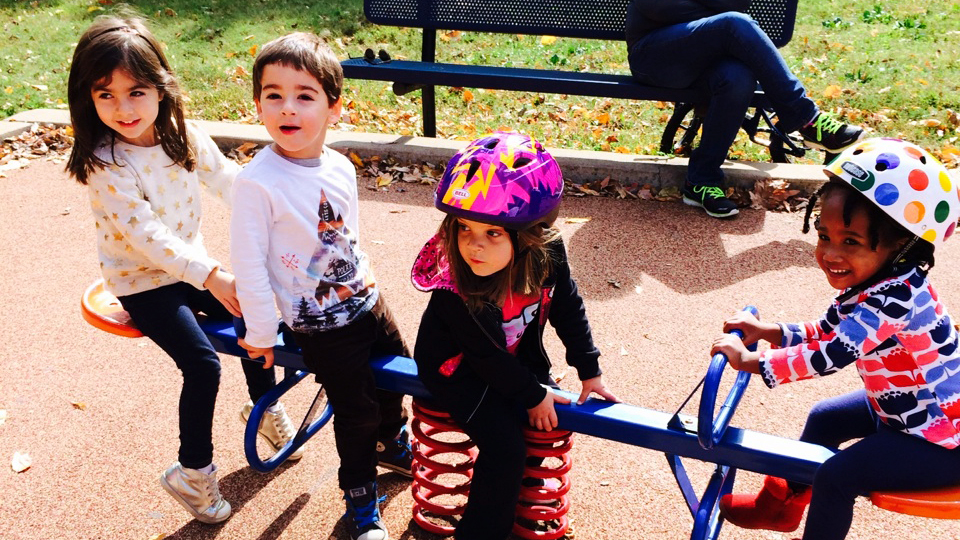It’s a promising sign that the national childhood obesity rate appears to be leveling off. But progress has been uneven, with persistent racial and ethnic disparities. Overweight and obesity rates are substantially higher for Black and Latino children and adolescents, creating serious health risks. That’s why the Robert Wood Johnson Foundation is tapping the expertise of NC State researchers for a national project to end childhood obesity.
Myron Floyd, head of the Department of Parks, Recreation and Tourism Management in the College of Natural Resources, studies racial disparities in access to public parks and worked on one of the foundation’s first national studies with underserved groups. We asked him to tell us more about the latest national project, the Physical Activity Research Center.

What is the Physical Activity Research Center?
The Physical Activity Research Center (PARC) is a national project to study how to make physical activity a part of the everyday experience for children and youth, especially among those at highest risk of overweight and obesity. The Robert Wood Johnson Foundation has invested $2.9 million in PARC as one of its five “big bets.” Four universities — University of California San Diego, Johns Hopkins, NC State and Georgia Tech — are teaming up to do research. The goal is to help all American children reach a healthy weight by 2025.
What motivated the project?
The childhood obesity epidemic and need for equity. A third of children and youth in the U.S. are obese. There are positive signs that the epidemic is leveling off. However, this positive movement is not being seen within low-income households and historically underserved populations. The project aims to identify how the built environment, which includes parks, recreation facilities, and streets and sidewalks, promotes greater physical activity among children and youth. The results will be provided to individuals and organizations that make decisions about park planning and design.
Why was NC State invited to be part of this project?
Public parks are important community settings for promoting healthy communities. NC State has enjoyed a 10-year relationship with the Robert Wood Johnson Foundation because of our expertise in the health benefits of parks. I was principal investigator on one of the first park projects funded by the foundation that focused on underserved populations. For more than 20 years my research has focused on racial disparities in access to public parks. Aaron Hipp, an associate professor in the Department of Parks, Recreation and Tourism Management, is co-principal investigator for this project. He studies built environments and health with a focus on where, when and for whom environments support healthy behaviors. His research has investigated quality of local playgrounds, impact of new greenways, and the ability of programs to engage local communities in physical activity and recreation. He uses emerging technologies (GPS, accelerometers, web cameras, crowdsources) to objectively study the person-environment interaction and share research results that will help every community live, play and work in healthy neighborhoods. Our combined expertise turned out to be a very good fit to cover the role of parks and children within the PARC project.
What is our role in the project?
NC State will study public park use and physical activity among children in lower-income and racial and ethnic minority communities in Raleigh-Durham and in New York City. The findings will inform planning decisions for city parks, providing information about how to design parks and improve recreational opportunities and programs for underserved populations. The grant to NC State is $425,000.
What will the research involve?
The project will have three main components. We will rate the quality of a sample of neighborhood parks and surrounding streets and sidewalks in the Raleigh-Durham area and in New York City. We will also conduct systematic observations of how children and families use parks, with an eye toward documenting settings and facilities that promote or hinder activity. Finally, we will conduct a brief telephone survey to identify park attributes parents look for when making decisions about their children’s use of parks.
How will the results be shared and used?
Beyond peer-reviewed publications and conference presentations, we will work directly with the National Recreation and Park Association (NRPA), the North Carolina Recreation and Park Association, and the Recreation Resources Service (RSS) here at NC State to disseminate the results of our work through policy briefs and fact sheets. To ensure we are reaching the right audiences with appropriate methods, we have representatives from NRPA and RRS, as well as the National Park Service, as study advisers.
- Categories:



